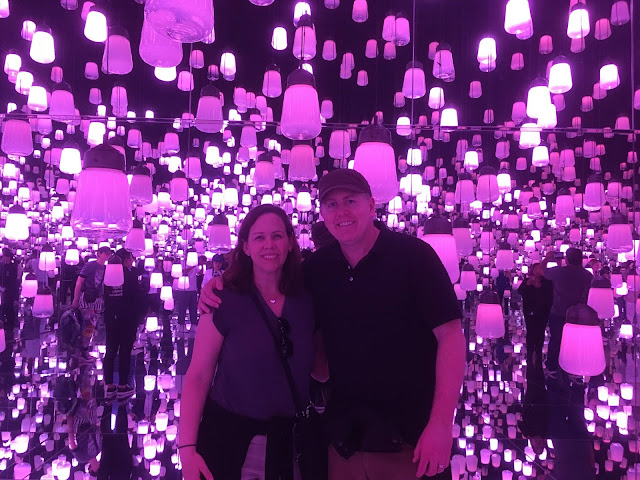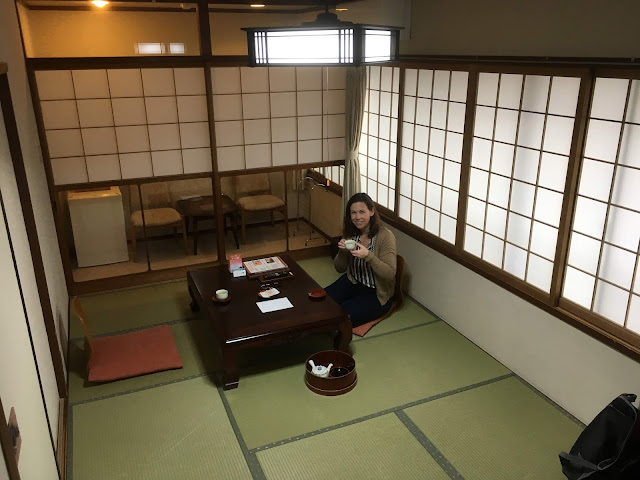With only a few days left in Japan we had to make the most
of our time, so we took a very early train from Takayama to arrive in Tokyo by
the early afternoon. First up was lunch and a couple of icy cold beers at the Ginza
Lion, a 1930’s-era German-style beer hall with gorgeous art deco mosaic murals
on the walls.
We then spent a few hours wandering the halls of the Tokyo
National Museum before heading over to the Akihabara Electric Town area. This
is a true nerd paradise, with shop after shop of comic books, video games, electronics,
manga/anime costumes, and maid cafes. We went into this Sega video arcade were
amazed by the size and scope. Each floor had a theme – prize games, music games,
classic videogames, snapchat-filter-style photobooths, and virtual reality
games. Very cool!
Our plan for Tokyo was to stay two nights at a hotel in
Ginza, then two nights at one in Shinjuku so that we could explore each area without
spending too much time on public transit. Since the Ginza hotel was within
walking distance of the famous Tsukiji fish market, we made sure to head over
there for lunch on our second morning. We had a delicious meal at the counter
at Sushi Zanmai, then wandered through the market area to check out what else was on
offer – tuna head or sea urchin, anyone?
After lunch we took the subway to Senso-ji Temple, the
oldest temple in Tokyo. It is also one of the best places to people watch,
because – believe me – there are a LOT of people to watch.
Throughout our time in Japan, we saw lots of tourists
wearing brightly-colored kimonos and having their poor boyfriends take multiple
photos of them for their Instagram.
These clever ladies went a step beyond and had what appeared to be a
professional photographer taking multiple shots of all of them with the temple in
the background.
The next morning we got an early check-in at our final hotel
in Japan, the Park Hyatt. This is the same hotel that was featured in the Bill
Murray movie “Lost in Translation”. It was a classy place. The mini-bar in our
room was like a work of art…”for relaxing times, make it Suntory time”.
From the hotel, it was a quick walk through Yoyogi Park to
get to the Harajuku district, which is known as a lively place where all the
cool teenage kids hang out. The main attraction is the colorful and pedestrian-friendly
Takeshita-dori street.
We braved the long lines to get ourselves one of these yummy
crepes. They had so many options on the menu, you had to order what you wanted
by number.
In the evening we took a guided walking tour through the
Golden Gai nightlife area. Over 200 tiny ramshackle bars and pubs are crammed
into an area the size of a soccer field. Some pubs had only enough seats for
five people, but our guide took our group to one that had a luxurious 25 seats
and a restroom – fancy!
On our last full day in Tokyo we headed to the coolest…museum? ...art exhibit? I’m not really sure how to categorize it, but teamLab Borderless
was quite the experience.
The artists have created a multi-room space where guests can
interact with the digital art. Some of the rooms had moving light projections,
others had mazes with brightly lit features, giant balloons, mirrored
reflections, or a combination of all of the above. It was definitely a colorful
and surreal experience.
For our final evening in Japan we went for a nightcap and
some jazz at the iconic New York Bar. The music was wonderful and the city views
in the background were just spectacular. A great way to end the trip!
























































